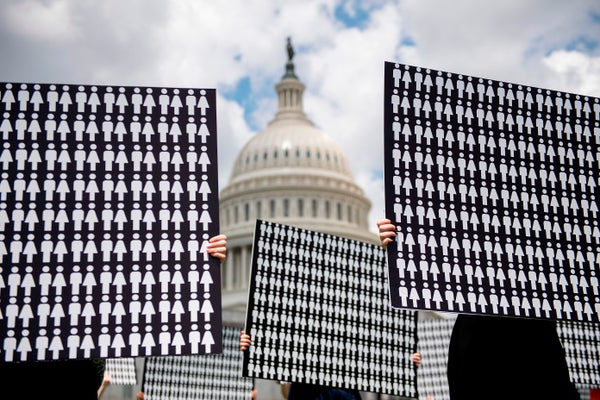As executives and doctors at several of America’s largest nonprofit health systems, we’ve seen the pandemic’s toll up close. From intubating patients and comforting family members to preparing food and disposing of PPE waste, our colleagues have been on the front lines of our country’s response to COVID-19, often risking their own safety to combat the virus.
That’s what hospitals and health care professionals do: We use our expertise to fight for our patients’ safety, well-being and lives. During this pandemic, leaders in Congress helped make our efforts possible, giving us support to bend the curve on a pandemic that tore through communities, upended our economy and claimed more than 600,000 American lives. But when it comes to another deadly epidemic ravaging our country—the epidemic of gun violence—congressional leaders have not given us the tools we need to protect our patients and our communities.
This isn’t a new problem. Over the past several decades, hospitals and health care professionals taking on the public health crisis of gun violence have not gotten the support we need. Since 2003, Congress has limited our ability to collect data on gun violence to understand its scope and complexity. In 1996, Congress passed legislation that led to funding restrictions for basic medical research into firearm injury and death (which have recently been somewhat relaxed). And in 1976 Congress excluded firearms from federal consumer safety standards, then later made it nearly impossible for gun manufacturers to be held liable for negligence and unlawful conduct, even when their actions cost lives. As health care professionals, we count on research, data collection and evidence-based public policy to do what’s best for the patients we serve. Denying health systems these tools to combat COVID-19 would have been unconscionable—but that’s exactly what’s happening in the fight against gun violence.
On supporting science journalism
If you're enjoying this article, consider supporting our award-winning journalism by subscribing. By purchasing a subscription you are helping to ensure the future of impactful stories about the discoveries and ideas shaping our world today.
The results have been devastating. Last year alone, there were more than 43,000 gun-related deaths in the United States. That’s more than the number of Americans who die respectively from high blood pressure, malnutrition, HIV, Parkinson's disease or viral hepatitis. Like many of those diseases, gun violence disproportionately impacts communities of color. For example, gun violence is the leading cause of death for young Black men in America—accounting for more deaths than the next nine leading causes combined.
For too long, health care professionals have been hindered, not supported, in our fight to protect patients from gun violence. It’s past time for that to change. That’s why this week, we joined 18 health system CEOs across the U.S. and more than 1,300 health care professionals in urging lawmakers to help us do our jobs. We’re asking Congress to support President Biden’s plan to invest $5 billion in hospital- and community-based gun violence intervention programs proven to reduce shootings.
These programs enable health care professionals to screen nonfatal gunshot patients to identify those at greatest risk for reinjury and connect them with trained case managers who help them access services, including trauma-informed care, job training and housing. And the data show that such efforts work. In some communities, as many as 45 percent of patients with a history of violent injury return to the hospital with another violent injury within the next five years. But programs dedicated to intervening at this critical juncture have a proven track record of success. A hospital-based violence intervention program in Baltimore, for example, saw the injury recidivism rate for patients fall as low as 5 percent.
We’re taking steps within our own health systems to implement similar programs. At Northwell Health, we’re screening patients for gun violence risk to connect high-risk individuals to services and counsel gun owners about safe firearms practices. At Johns Hopkins Hospital, we’re integrating violence interrupters into our work, a community-based approach to reducing communal and interpersonal violence. And at UChicago Medicine, we have integrated violence recovery specialists (VRS) into our adult and pediatric trauma centers to begin the process of recovery while the patient is in our hospitals.
These programs are a critical component of the comprehensive approach necessary to curb this epidemic and save lives. But we need to scale up proven interventions across the country, and to do that, we need Congress to act. We're encouraged that some members of Congress are already taking stepsto do just that.
Nearly 18 months after our battle with COVID-19 began, health care professionals have been applauded, thanked and celebrated as heroes. The best way for our country to show its appreciation is to empower us with the tools we need to prevent gun violence. The lack of action has led to so many of us left trying to stitch back together the lives this epidemic has already touched. That needs to change.
In medical school graduation ceremonies, students traditionally recite the Hippocratic oath, pledging to “prevent disease whenever I can.” It’s a sacred and time-honored promise. Congress should help us keep it.
This is an opinion and analysis article; the views expressed by the author or authors are not necessarily those of Scientific American.
